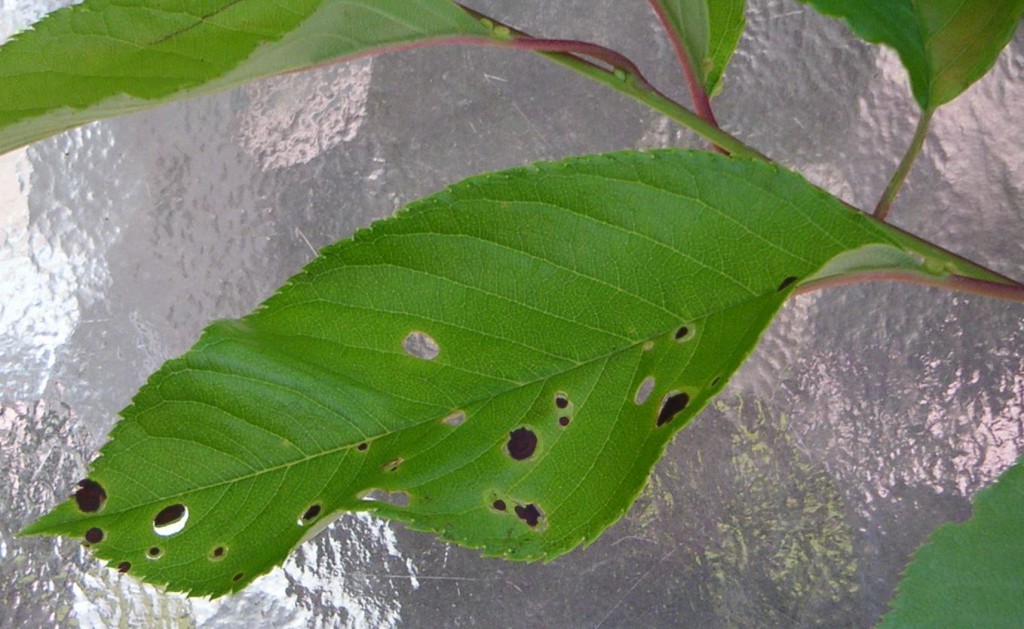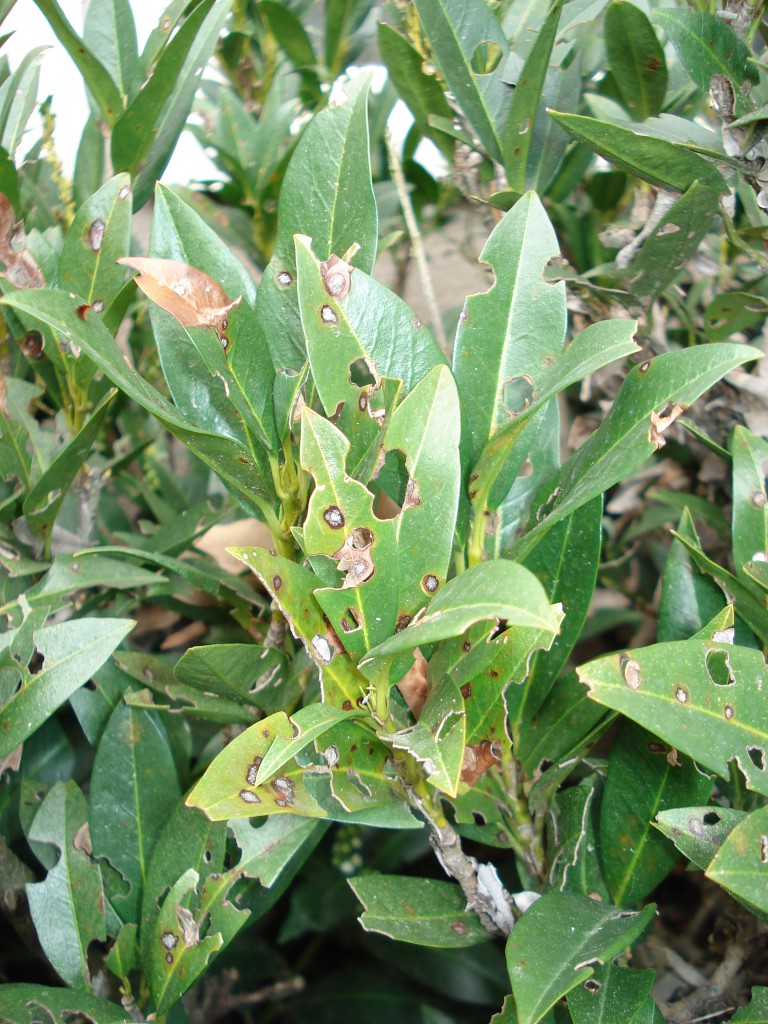Every summer, we receive a lot of calls about holes in the leaves of ornamental cherry trees and other related fruit trees. Generally, when you think of holes in the leaves of a tree, you automatically assume that it was caused by some sort of chewing insect such as a beetle or caterpillar. Although these insects are common on flowering cherries and other fruit trees, they aren’t the only possible culprit.

If you’ve watched your cherry trees closely and haven’t seen any insect activity, then you might want to consider the possibility of a disorder known as shot-hole disease. This is one of the most common diseases of ornamental flowering cherries and even edible cherry varieties. This disease also affects related landscape shrubs such as the cherry-laurel.
The exact cause of shot-hole disease is thought to be a combination of a bacterium and a fungus that attacks peaches, plums, cherries, apricots, and nectarines, which are all closely related. The shot-hole appearance of the leaves is where the disease-infected tissue dries up and falls out of the center of the leaf spot, leaving a hole about 1/8” inch in diameter. This disease literally appears as though someone were shooting a shotgun at the leaves of your tree, creating a random pattern of small shot-holes.

The good news is that this disease is not lethal to cherries or any other trees. However, it does make the appearance of the tree look bad and sometimes can cause some of the leaves to drop in mid-summer. This premature leaf drop can be stressful, but is tolerated quite well by trees that are otherwise healthy. Some years will be worse than others, depending on the weather. This disease favors warm, wet spring weather, which is common in Georgia. This year appears to be one of those really bad years where the weather has made the disease more severe. Cleaning up and removing dead leaves can help break the cycle of this disease from carrying over one year to the next. Vigilant leaf removal may not totally eliminate the disease, but can definitely help cut down on the severity of it next year.
At the end of the day, remember that these tiny holes are a minor issue as far as the tree is concerned. At this point in the season, the damage is already done, and the holes will remain until the leaves fall off in the fall. Therefore, spraying in mid-summer does not provide any benefit to the tree and will not cure the leaves that are already damaged. If the disease is a concern to you as far as the tree’s appearance, you can spray a fungicide in early spring to minimize the damage from this disease next year.
The key is to begin spraying as soon as new leaves emerge in spring and continue spraying at 7-10 day intervals until the leaves are fully expanded. Young tender leaves in early spring are the most vulnerable. Therefore, your goal is to protect these young leaves with a fungicide until they have a chance to mature and better tolerate the disease. Spray the leaves with a fungicide such as Mancozeb, Kocide, Nu-Cop or other similar products containing copper in the active ingredient. Keep in mind these fungicides only work for about a week and will need to be reapplied to newly emerged leaves at regular intervals to be most effective.
Most people will find that it just isn’t practical or necessary to spray large, mature trees. However, young trees or specimen trees in your landscape might be worth the extra effort to control shot-hole disease for appearances. Remember to read and follow all labeled application rates and safety precautions when using any pesticides.
Paul Pugliese is the Agriculture & Natural Resources Extension Agent for Bartow County Cooperative Extension, a partnership of The University of Georgia, The U.S. Department of Agriculture, and Bartow County. (770) 387-5142. For more information and free farm, lawn, or garden publications, visit our local website at www.ugaextension.com/bartow
